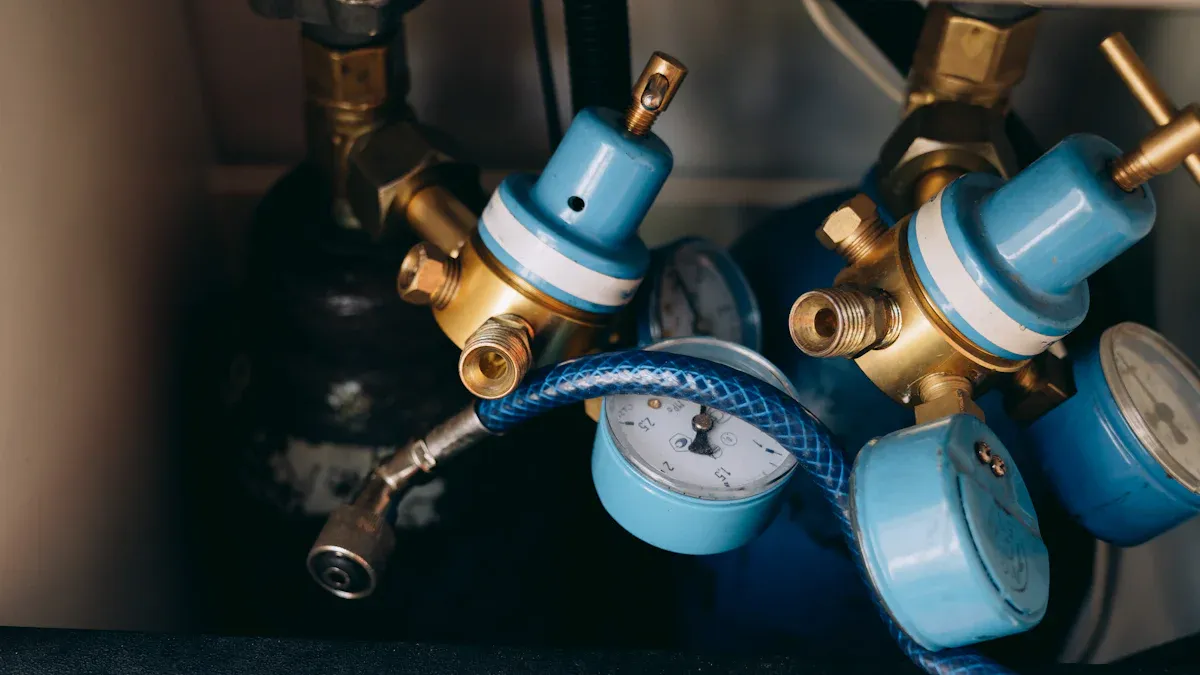In modern cooling and ventilation systems, energy efficiency, reliability, and performance are critical factors driving innovation. Among the many advancements in this field, the EC cooling fan has emerged as a game-changer, offering unparalleled energy efficiency and precision control. These fans combine advanced electronics with robust mechanical design to deliver superior cooling performance across a wide range of applications. From HVAC systems to industrial equipment, EC cooling fans are setting new standards in cooling technology. This article Caforre explores the applications of EC cooling fans,illustrating why they have become a preferred choice for industries seeking high-performance cooling solutions.
What is an EC Cooling Fan?

An EC (electronically commutated) cooling fan is a type of cooling fan that uses a brushless DC motor combined with integrated electronic control. Unlike traditional AC fans that rely solely on alternating current, EC cooling fans are powered by DC but are compatible with AC power supplies, thanks to their internal conversion electronics. The defining feature of EC cooling fans is their exceptional energy efficiency, achieved through precise control of motor speed and power consumption. These fans can adjust their performance dynamically based on the cooling requirements, making them highly efficient compared to conventional fans. Constructed using high-quality materials and advanced engineering, EC cooling fans are designed to deliver consistent and reliable airflow in demanding environments. They are used extensively in applications where cooling efficiency, noise reduction, and energy savings are critical.
Applications of EC Cooling Fans
EC cooling fans are versatile and find applications across various industries due to their efficiency, precision, and adaptability. Below are some of the primary areas where EC cooling fans excel.
1. HVAC Systems
One of the most common applications of EC cooling fans is in heating, ventilation, and air conditioning (HVAC) systems. These fans are used in air handling units, ducted systems, and ventilation systems to provide precise airflow and maintain optimal indoor air quality. The ability to adjust fan speed dynamically based on temperature and airflow requirements makes EC cooling fans ideal for HVAC systems. They contribute to significant energy savings by running at reduced speeds during low-demand periods, without compromising performance. Additionally, their quiet operation ensures minimal noise disturbance, making them suitable for residential and commercial buildings.
2. Data Centers and Server Cooling
Data centers and server rooms generate a significant amount of heat due to the continuous operation of IT equipment. EC cooling fans are widely used in these environments to maintain the temperature within safe operating limits and prevent equipment failure. With their precise speed control and energy-efficient operation, EC cooling fans help reduce power consumption in data centers, contributing to lower operational costs and improved sustainability. Their reliability and ability to handle high cooling demands make them an essential component in modern server cooling systems.
3. Industrial Equipment and Machinery
In industrial applications, EC cooling fans are used to regulate the temperature of machinery, control panels, and electronic components. These fans are critical for maintaining the performance and longevity of equipment in manufacturing, processing, and automation systems. The rugged design of EC cooling fans allows them to operate reliably in harsh industrial environments. They provide consistent airflow and cooling, ensuring that sensitive components are protected from overheating and damage, even under demanding conditions.
4. Refrigeration and Cooling Systems
EC cooling fans play a vital role in refrigeration and cooling systems, including commercial refrigerators, freezers, and cold storage units. These fans help maintain consistent temperatures, ensuring the preservation of perishable goods and the efficient operation of refrigeration systems. The energy-saving capabilities of EC cooling fans are particularly beneficial in refrigeration applications, where continuous operation is required. By reducing energy consumption, these fans contribute to cost savings while minimizing the environmental impact of cooling systems.
5. Renewable Energy Systems
EC cooling fans are also used in renewable energy applications, such as wind turbines and solar inverters, to regulate the temperature of power electronics and prevent overheating. These fans ensure that renewable energy systems operate efficiently and reliably, even in challenging environmental conditions.
The EC cooling fan represents a significant advancement in cooling technology, offering unmatched energy efficiency, precise control, and reliable performance. Its versatility and adaptability make it suitable for a wide range of applications, from HVAC systems and data centers to industrial equipment and renewable energy systems. By investing in EC cooling fans, industries can enhance their cooling efficiency, reduce energy consumption, and contribute to sustainable practices. With their advanced features and long-term cost savings, EC cooling fans have become a preferred choice for high-performance cooling solutions in today's energy-conscious world.
https://www.szcaforre.com/EC-Axial-Fan
www.szcaforre.com
Shenzhen Caforre Technology



More Stories
Strip Cable Ties vs. Traditional Cable Ties: What’s the Difference?
On-Site Flange Repair Using the FI26E Flange Facing Machine for a Fortune 500 Chemical Equipment Manufacturer
A Comprehensive Guide to the Uses and Features of Industrial Cylinder Bed Sewing Machines